Alligators are known for their swimming prowess and can often be seen basking in the sunlight on a sandbank. But should we now be looking up for these giant reptiles as well? Can alligators climb trees?
Alligators can actually climb trees. However, the alligators you may see in a tree are usually adolescents and don’t weigh too much. The tree must also be strong enough to support the weight of these giant reptiles.
Alligators have been around since the dinosaurs, and it’s no wonder they survived with their unique way of adapting to their surroundings, including tree climbing.
Let’s look at this phenomenon closer.
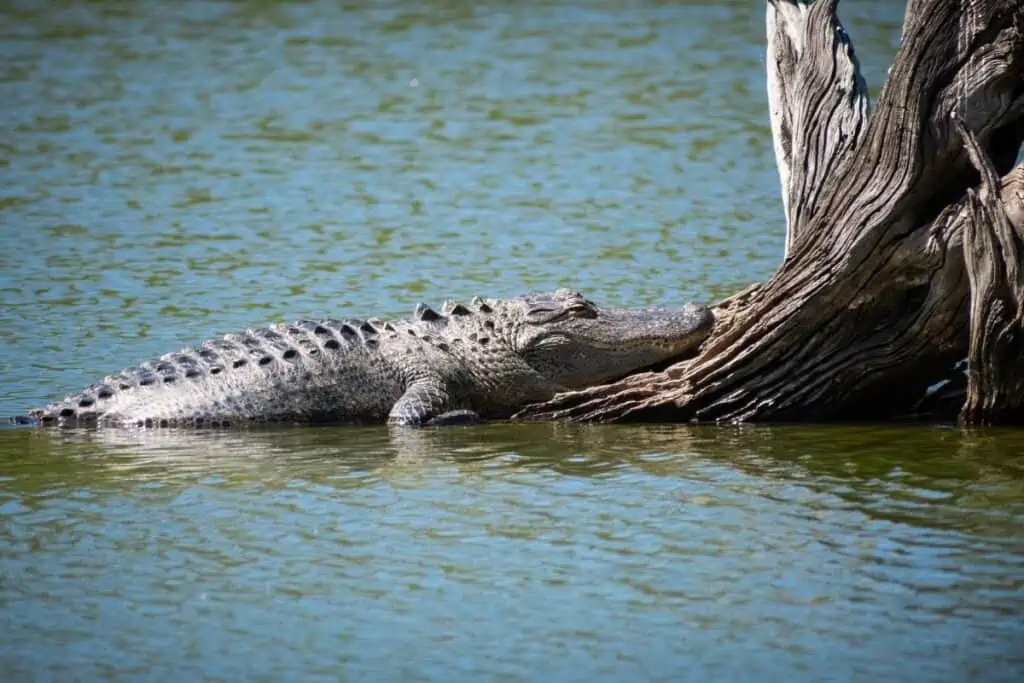
Can Alligators Climb Trees?
According to multiple documented studies and recorded evidence, alligators can climb trees. The alligators who typically climb trees are adolescent alligators that don’t weigh too much. That means the trees are usually solid and tall enough to hold their weight.
A study in Herpetology Notes found that alligators don’t have the physical adaptations that most tree-climbing reptiles have. However, that does not stop them from climbing trees.
The hefty adult alligators can climb up to 6 feet high, and researchers have seen juvenile alligators climbing as high as 30 feet.
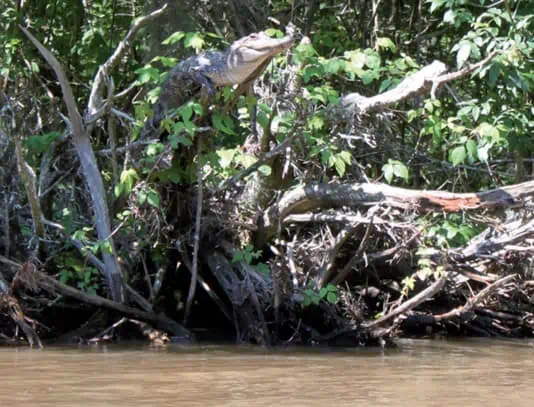
They found that while the juveniles could vertically scale the tree’s trunk up as high as they liked, the heavier adult alligators relied on solid angled branches that could hold their weight to get higher.
This behavior is not limited to alligators. The study mainly focused on five different crocodile species. The researchers observed that all the alligators and crocodiles exhibited the same ability and willingness to climb trees.
In addition, they found quite a few reasons why these huge reptiles climb trees, including an incident where a Dwarf crocodile escaped its enclosure.
One Dwarf crocodile, a popular attraction at the Bristol Zoo, wanted to be free because it scaled one tree growing in its enclosure at an angle and then climbed over a barrier. So now you must be careful and keep an eye on the trees and the water if you go into alligator-infested waters.
Why Do Alligators Climb Trees?
Researchers first noted that alligators climb up trees and other objects in 1972. The researcher briefly stated that they found baby alligators climbing trees and bushes and clinging to reeds like chameleons.
While it is a well-known fact that alligators climb trees in the scientific community, there is still speculation about why these hefty animals would want to climb trees.
The study published in Herpetology Notes found that there are a few possible reasons alligators climb trees:
Alligators Climb Trees To Help Regulate Their Temperature
One of the reasons alligators might climb a tree is to help regulate their body temperature. Alligators are ectotherms (cold-blooded) and cannot control their internal temperature without help from their surroundings and the sun.
Alligators are easily affected by temperature change. Many researchers have speculated that it might be why they climb trees. When alligators are not getting enough warmth from their surroundings, they will seek out higher areas where the heat is more prominent, like trees.
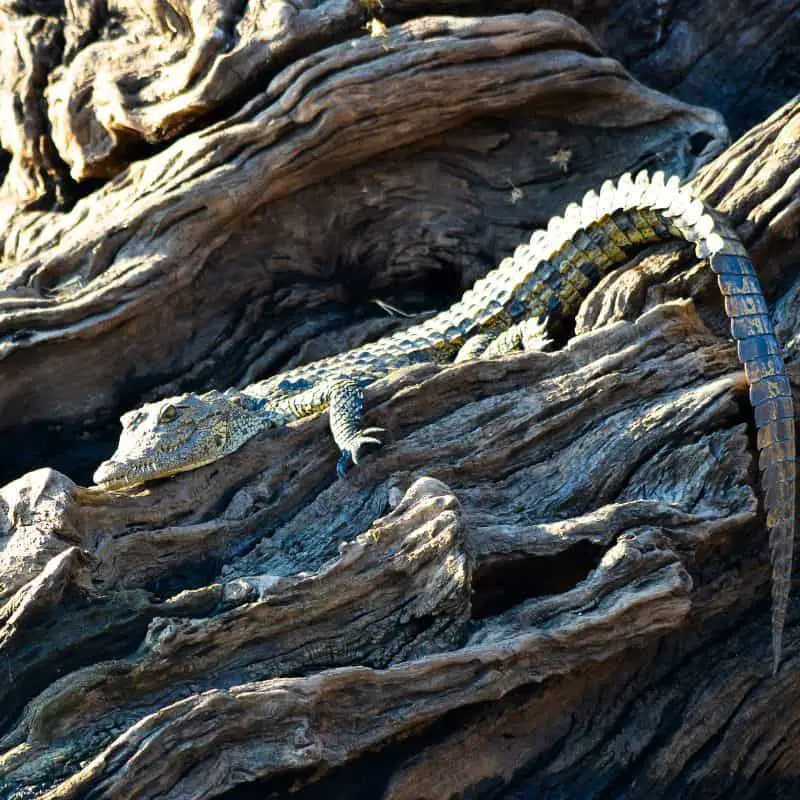
Trees tend to absorb heat, and alligators are attracted to that heat. So they climb as high as they can in the tree, bask in the sunlight and soak up the tree’s warmth.
They will use this method the closer it gets to winter to escape the cold water and store up as much heat as possible before they go into brumation.
Alligators Climb Trees To Keep An Eye On Their Surroundings
Alligators are territorial and will fight for other alligators for their territory. They will also take on another alligator to win over a mate. A few alligators have been observed watching out for a rival higher up in trees, cement pipes, or higher up river banks.
Alligators will use the higher ground advantage to surprise a rival. Attacking them when they least expect it.
Alligators Climb Trees To Camouflage Themselves
One of the more fascinating reasons alligators climbs trees is to camouflage themselves. They are highly evolved predators that can quickly adapt to their surroundings. That is where climbing trees becomes very useful.
As already mentioned, in 1972, researchers observed small crocodiles and alligators in bushes and trees and clinging to reeds. They suspected that these juveniles used the trees to camouflage themselves so they could attack unsuspecting prey.
Juvenile alligators use the rough look of the bark to hide while hunting for frogs, toads, fish, and insects. Young alligators use this method to track and kill prey bigger than them.
They use the tree because it helps them see further, and the boney scales on their backs blend in with the bark, which is effective when their prey is fast, and the only option is to ambush them.
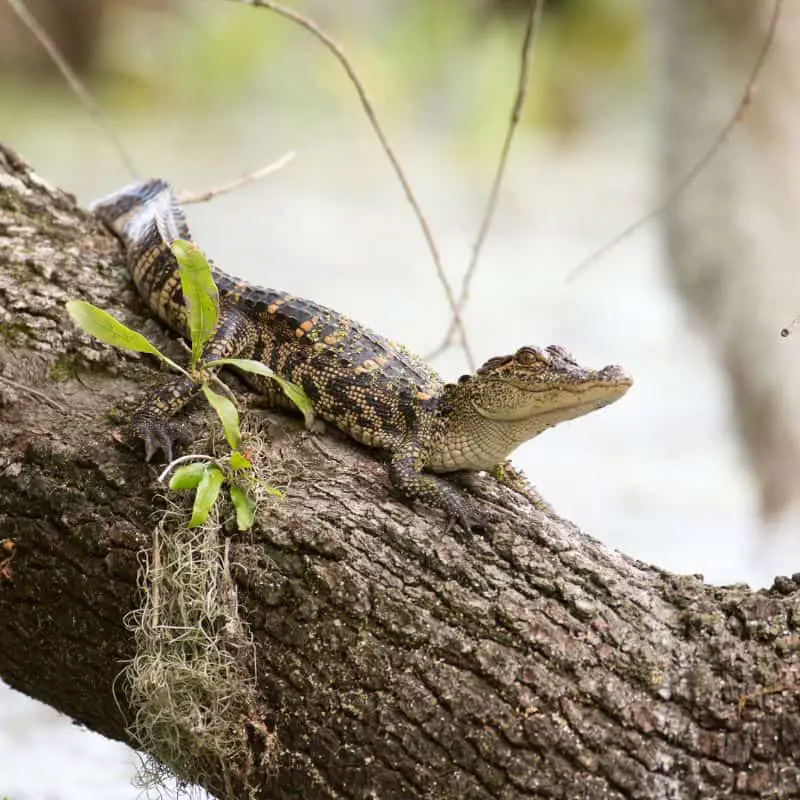
What Do Alligators Climb Besides Trees?
In the last decade or two, many stories have involved people finding alligators in their backyards. Many of these people live near swamps, marshlands, and lakes. That raises the question, how can an alligator get inside if your home is fenced off?
One such incident that took place in 2019 was when a bystander caught an alligator climbing over a 6-foot fence at the Naval Air Station (NAS) in Jacksonville.
She was shocked to see the huge alligator climb up the fence and then flop onto the other side.
The alligator was not afraid of the people at the Naval Air Station and wandered off into the shrubs and bushes not long after scaling the fence.
It is terrifying to think that you now need to worry about alligators in the water, the trees, and climbing fences.
The video has many people worrying that their fences are too low and that alligators will climb their home’s walls to get into their yards. Alligators that climb fences are looking for something particular.
Most Herpetologists think that alligators will climb a fence to get to a specific place, such as:
A Preferred Nesting Spot
Many alligators have a nesting spot they prefer and will do whatever they can to return to that spot each year. So if you see an alligator climbing your fence, you may have a mamma-to-be that uses an area next to your yard as a nesting spot.
A Spot To Protect Their Territory
If you stay in a spot that has not been fenced off for long, you might find an alligator in your backyard if it has marked it as part of its territory.
A Spot When There Is A Food Shortage
When there is a drought where the water level in lakes and ponds dries up, the animals will leave.
Animals will seek a new source of food and water, So when a spot dries up, and there is no prey or water left for the alligator, it will come closer to populated areas in desperation.
That includes pools with small ponds adjacent to trees and bushes.
These areas are easy pickings for alligators because there is water and the bushes provide shelter for their prey like frogs, birds, insects, and fish (if the pond has them).
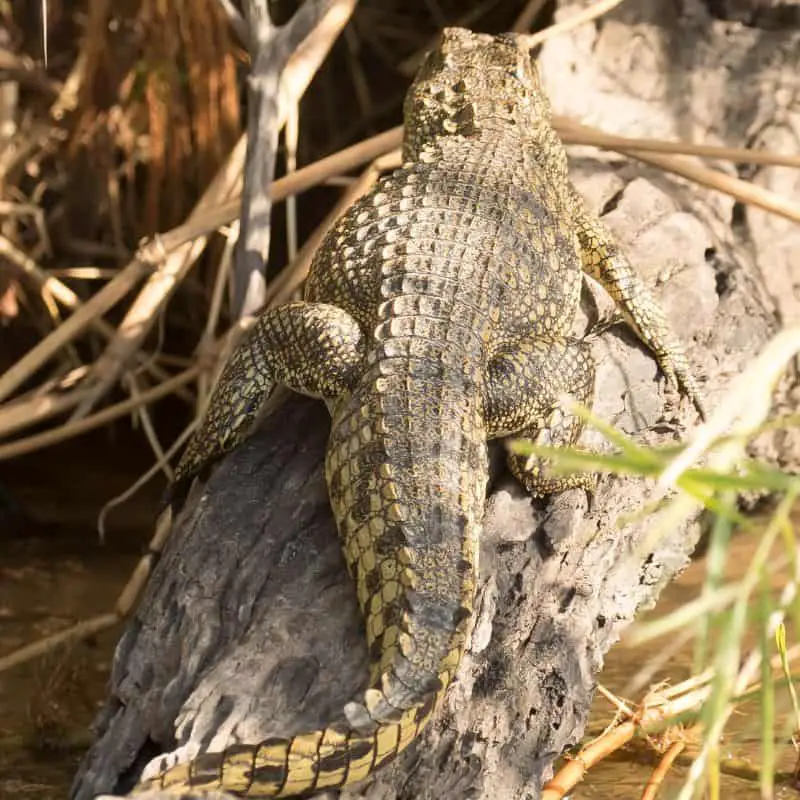
Final Thoughts On Alligators Climbing Trees
Alligators are not as agile as your typical cat, but that won’t stop them from climbing trees or fences.
They will climb trees to escape danger, especially young alligators; they also climb trees to help regulate their temperatures.
When it comes to hunting, climbing trees helps them get a better view and can ambush their prey more easily.
So next time you hear a rustle in the trees, you may want to get inside before you take a look.
